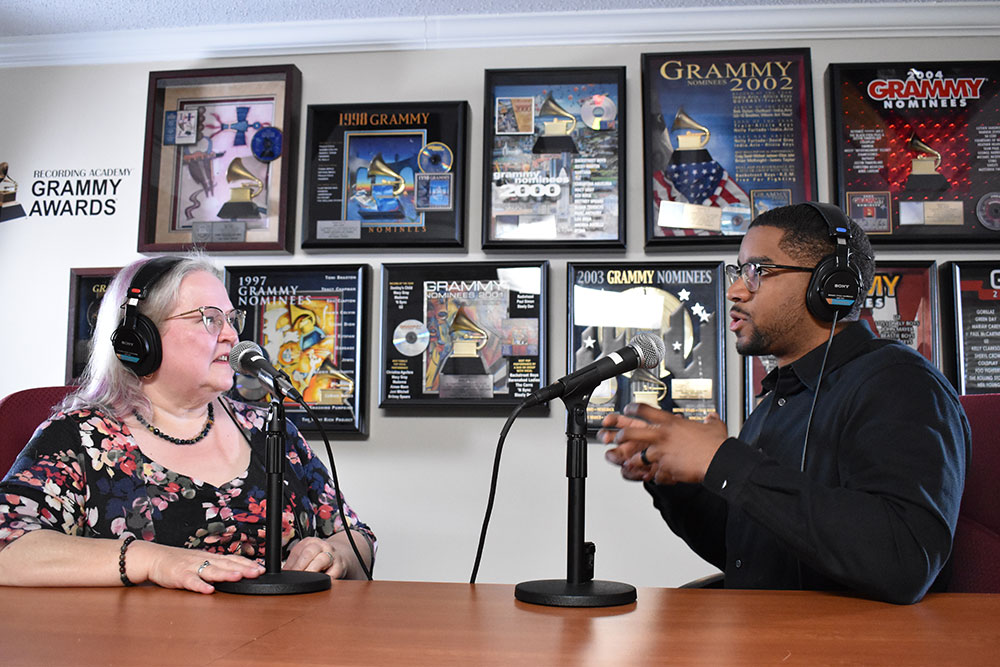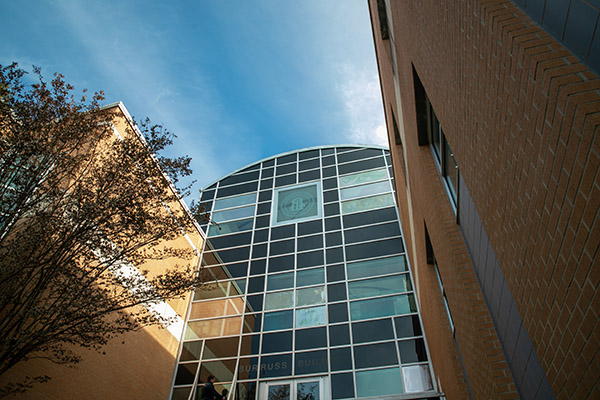
BrainLab Uses Technology - and Cooperation - to Change How Students Learn
KENNESAW, Ga. | Oct 30, 2018
Kennesaw State University President Pamela Whitten visited the Michael J. Coles College of Business BrainLab earlier this month to see firsthand how researchers are using the latest technology to understand the human mind.
In August 2017, the BrainLab – in partnership with the University of Minnesota Rochester – received $183,000 of a $258,000 National Science Foundation grant to study how 2D, 3D, and virtual models help students understand chemistry. By using the results of electroencephalograms and eye-tracking technology, the researchers can determine what types of models most effectively promote learning.

During her visit on Oct. 17, Whitten received an update on the project and spoke with the undergraduate students involved in analyzing EEG readings and eye-tracking results.
“You are all very impressive,” Whitten said to the students, including chemistry/biochemistry majors, an applied computer science major, and a student in the Master of Science in Healthcare Management and Informatics program (another student also in the MSHMI program was not present). “It’s so much fun to have the chance to see what you are doing. I don’t think you appreciate how articulate you are, and how obviously engaged and curious you are. I look forward to following each of your academic journeys at KSU and beyond.”
Whitten also applauded how the grant project has led to increased cooperation between colleges within Kennesaw State. The principal investigators on the grant are Dr. Adriane Randolph, executive director of the Coles College BrainLab, and Dr. Kimberly Cortes, assistant professor of chemistry education with the College of Science and Mathematics.
“I love seeing this collaboration between your colleges,” Whitten said. “That’s really how you move the needle.”
The interdisciplinary nature of the grant project has also expanded to include Dr. Herman “Gene” Ray, director of the Center for Statistics and Analytical Research, who is looking to provide graduate students to assist with data analysis, and Dr. Tim Martin in the psychology department, who has provided EEG data analysis tutorials.
“We will work with anyone interested as long as they can help us answer our questions,” Cortes said. “I believe that’s the future of science.”
While the project’s goal is to improve how chemistry students manage their cognitive loads, Randolph says the results could impact students in all disciplines, including business.
“We hear about this concept [cognitive load] in biochemistry, but we’ve also applied it to sales and marketing,” Randolph said. “We are looking to understand what changes a novice brain into an expert brain and how people analyze sales situations.”

Whitten’s visit to the BrainLab concluded with a live demonstration of the facility’s technology. She watched a popular Kennesaw State University promotional video while hooked up to the device that tracks her eye movement and measures facial movement to record emotions. Randolph then showed her how the technology helps reveal what visual elements people respond to, which could help enhance the University’s marketing efforts.
The NSF grant project Whitten was there to observe is the latest in a series of initiatives that the BrainLab has worked on to identify ways that human-machine interaction can enhance quality of life and improve organizational success. Since its founding in 2007, the BrainLab has partnered with organizations like the Georgia Institute of Technology, Saint Joseph’s University, Cortech Solutions, the Wadsworth Center, and the National ALS Association to study the practical applications of brain-connected interfaces.
While the BrainLab’s work may sound like science fiction, the results of its research could help students become better learners, employees remain engaged at work, and even help people suffering from locked-in syndrome communicate with the outside world.
– Patrick Harbin
Related Posts

Kennesaw State Partnership Equips Local Entrepreneurs with Tools for Success

Gathering Spot CEO Ryan Wilson on Building a Social Club to Inspire Connections.

Kennesaw State MBA student leveraging degree work for a cause

CEO Magazine Ranks Kennesaw State Executive MBA Top Program in Georgia, No. 11 in the World














